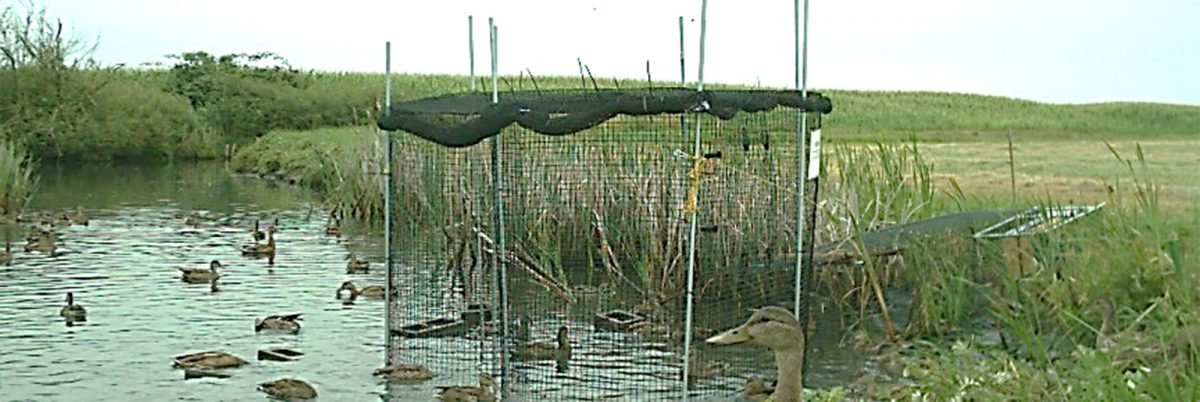Published: March 15, 2022
By Natural Resources Wildlife Program Staff
For the last three summers, August has belonged to the birds. The Wildlife Program Staff (Jeff Tatro, Gary Tatro, Jennifer Sevigny & Amanda Summers) spend every weekday morning covered in mud, slipping and sliding in a wetland wondering whether the ducks they hear quacking are laughing at them. The purpose of these mornings is to capture and band waterfowl near the Stillaguamish River delta prior to each waterfowl harvest season. Placing leg bands on ducks allows wildlife staff to determine harvest rates and allows biologists to observe movement and habitat use over time. Ducks either are captured in two different types of traps, a floating or swim in. Male mallards are the capture target, although females and other species are always banded.
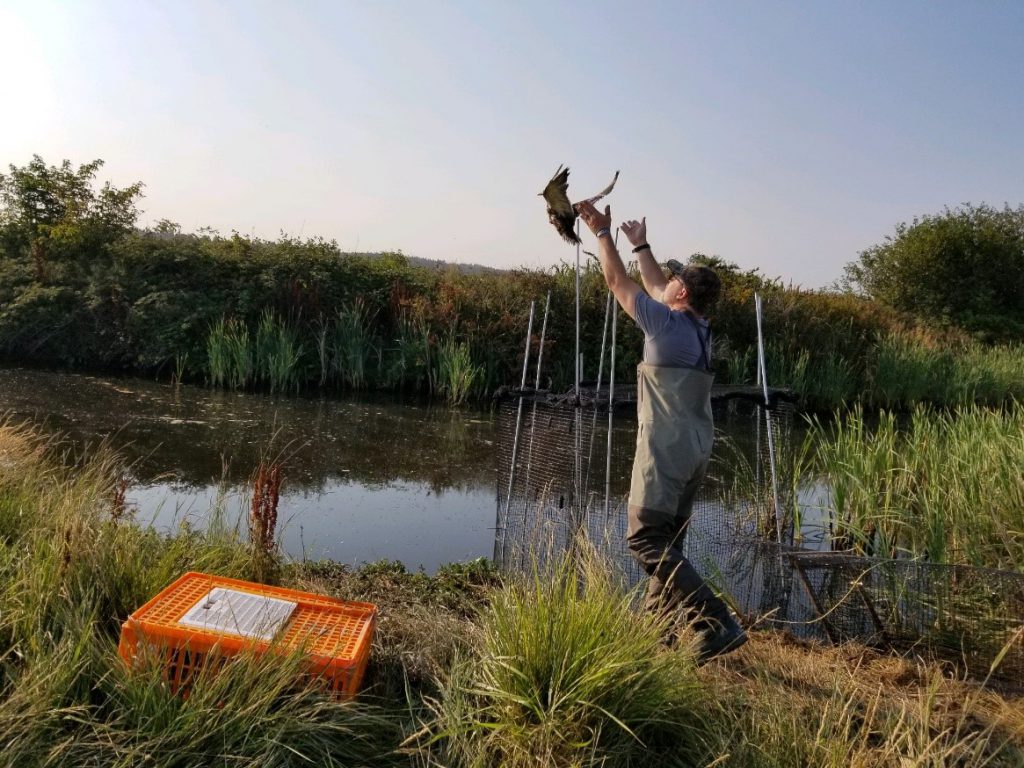
Aluminum bands are placed on the leg of a duck to mark that individual. Each band has a unique number, which is then recorded along with other information such as species, sex, age and location and submitted to a national database. This database allows us to understand harvest rate of mallards, provides insights to harvest locations, and helps us figure out the proportion of male vs. females harvested. For Jeff, that is what makes this project interesting, “it’s cool to learn more about their population and where they go if they leave the Stillaguamish Delta.” The only way to get this information is for the duck to be harvested and the hunter to submit the band number to the Bird Banding Laboratory Database or for the duck to be recaptured by biologists during banding efforts.
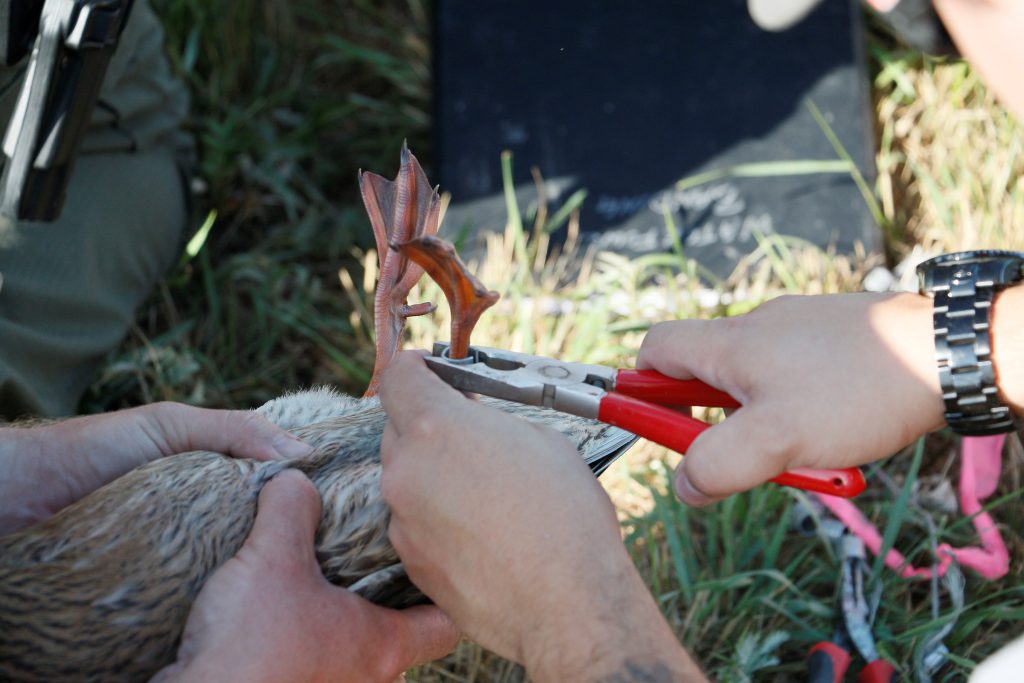
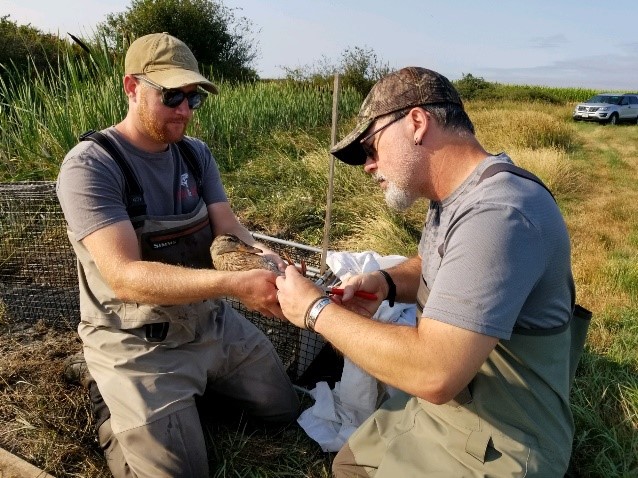
Mallards hatched the same year presumably from nearby, given that they are initially flightless, dominate captures (91%). Reported harvest recoveries in 2019 and 2020 were primarily within Snohomish and Skagit counties; however, birds banded in the Stillaguamish Delta were reported as far away as Oregon and Alberta. From 2019 to 2021, we have banded 255 ducks and recaptured 61. Most recaptures have occurred within the same season the duck was banded. During the 2019-2020 season, 15 of the 130 banded were reported as harvested along with 16 of the 71 banded prior to the 2020-2021 harvest season.
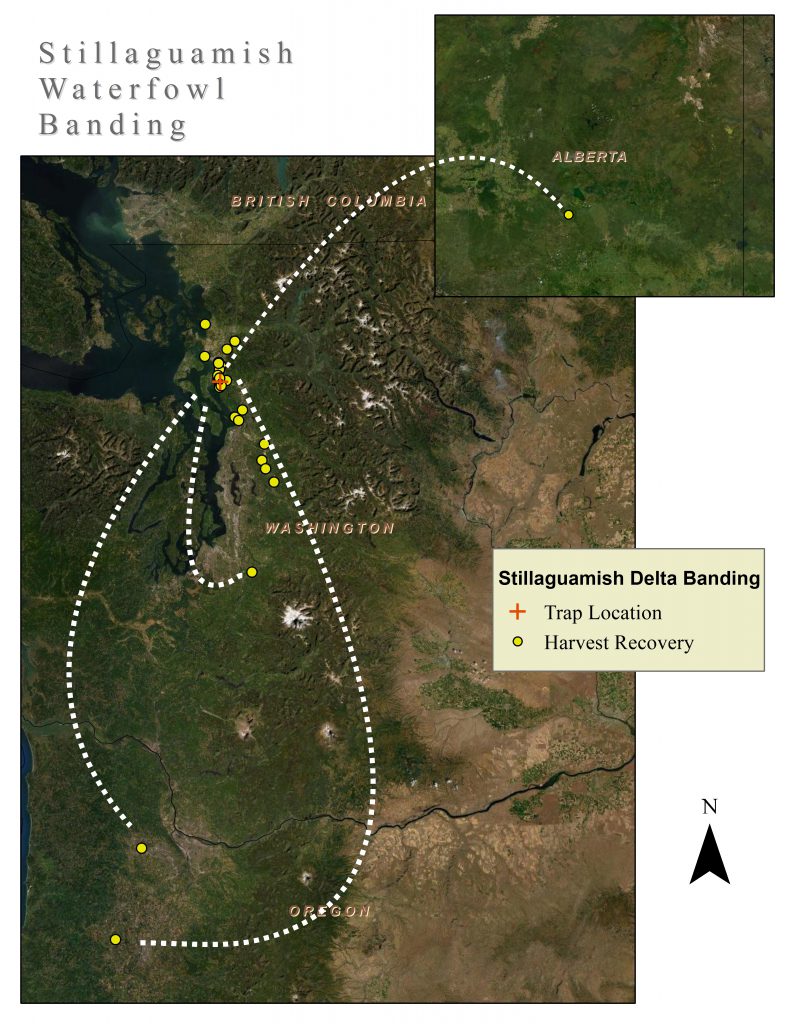
With this year’s waterfowl harvest season drawing to a close, we anticipate additional harvest reports and look forward to learning more about how the Stillaguamish Delta contributes to the greater North American waterfowl population.
For information about the Natural Resources Wildlife Program please visit the web page at:
https://www.stillaguamish.com/wildlife-program

